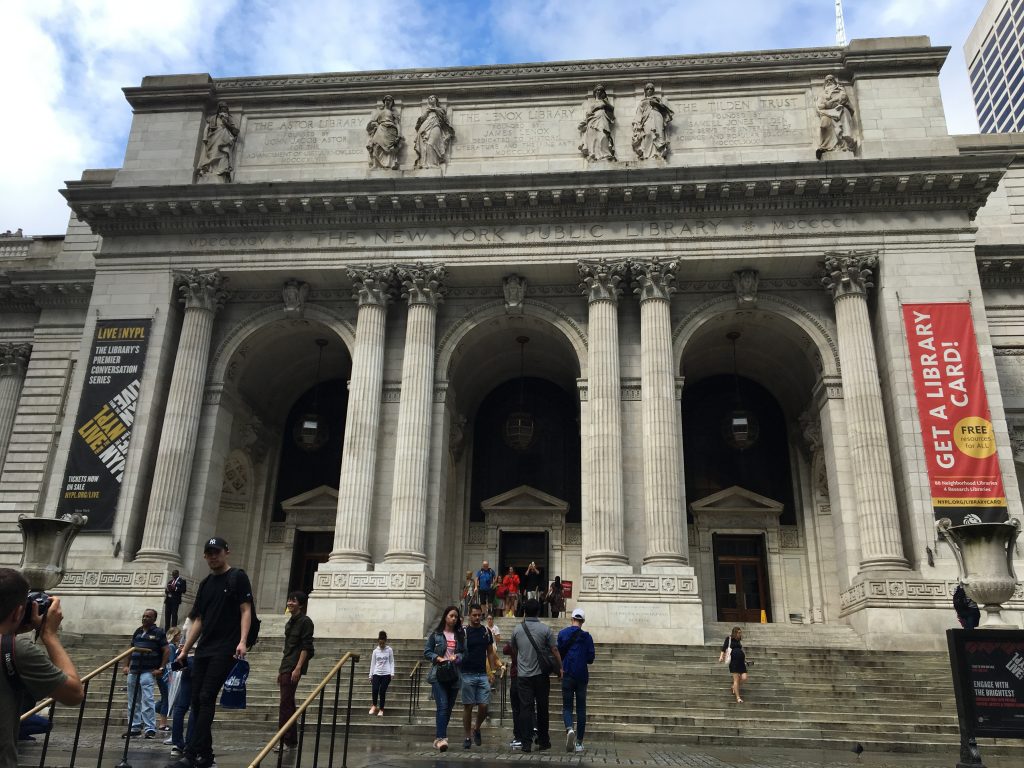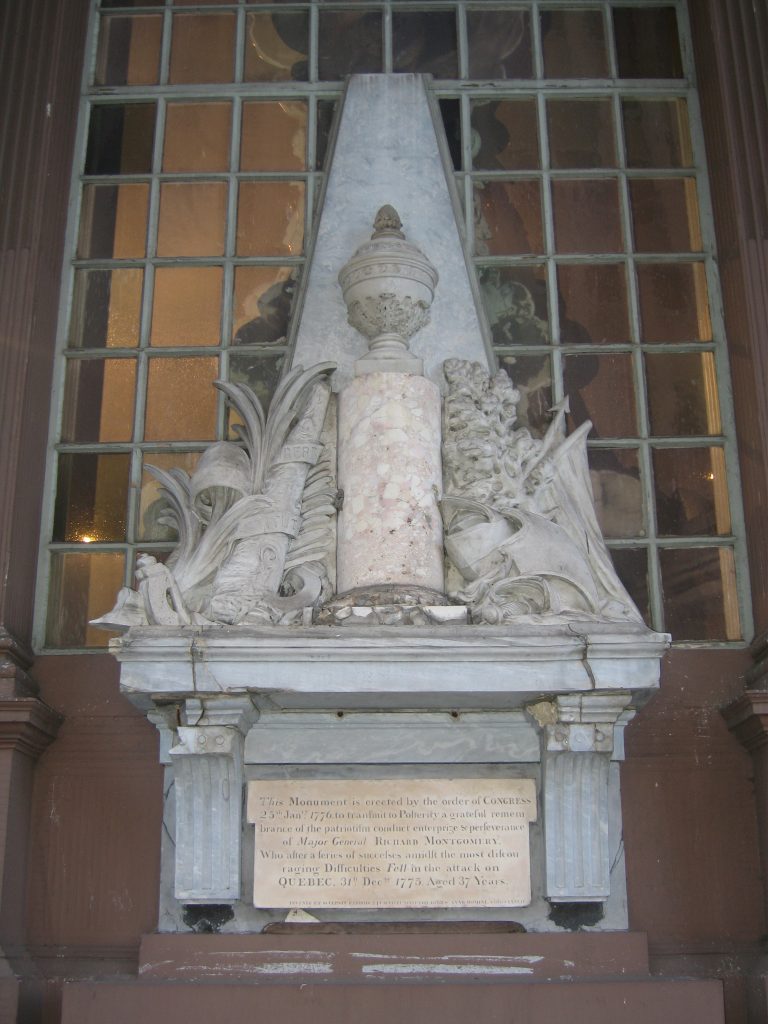There is a lot to say about inscriptions-in Latin, English, or other languages-in New York City – so these show notes will cover a few things. Many thanks to Dr. Matthew McGowan for joining us and sharing his deep knowledge of ancient languages with us.
Coins
Coins have a observe (front) and reverse (back). When ancient coins were struck (like modern day coins), words were included on these coins, that worked with the images to convey complex messages in an abbreviated form. If you really want to learn more about coins, check out the American Numismatic Society.

Public Domain
It has inscriptions everywhere from the front of the building to even the flooring when you walk in, which celebrate the original benefactors: the Astor Library, the Lenox Library, and the Tilden Trust. The newest benefactor, Stephen A. Schwarzman, is also honored with inscriptions on the piers (below the columns) on the main facade and on a plaque as one goes through the central bath.
The first monument ever erected in the United States.
The Waldo Hutchins Bench and Sundial
It contains a Latin inscription which is untranslated and reads, “Ne diruatur fuga temporum (Let it not be destroyed by the passage of time),” which comes from Seneca.
Caroline Alexander wrote an OpEd in the New York Times, challenging the selection of the Virgil quotation.
Bibliography
McGowan, Matthew M. “In Ancient and Permanent Language: Artful Dialogue in the Latin Inscriptions of New York City,” In Classical New York: Discovering Greece and Rome in Gotham, edited by Elizabeth Macaulay-Lewis and Matthew M. McGowan, 211–34. New York: Fordham University Press, 2018.





